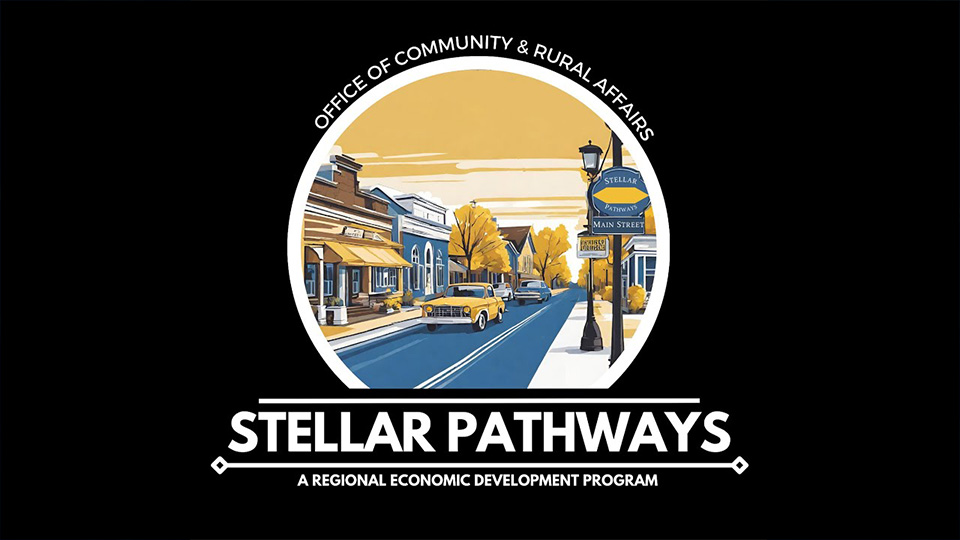OCRA launches revamped Stellar Pathways program
Subscriber Benefit
As a subscriber you can listen to articles at work, in the car, or while you work out. Subscribe Now
The Indiana Office of Community and Rural Affairs has relaunched a project investment initiative intended to build momentum in rural communities.
The Stellar Pathways Program will award nearly $13 million dollars and provide personnel support for two communities to build an ambitious project they probably couldn’t develop otherwise.
“We’re trying to get people to think outside of the box a little bit,” OCRA Executive Director Duke Bennett said. “Come up with a program, a project—something that you’ve wanted to do as a community for a very long time but didn’t have all the partners together to be able to pull that off.”
Community cohorts must submit their letters of intent by 4 p.m. on May 1. Participants will be announced in June, and the final two designees will be determined in January 2025 after a development period.
What’s new?
The initiative is an improved version of the Stellar Communities program, which was curtailed in 2020 due to the pandemic. The two biggest enhancements are the collaboration mindset requirement and the number of partners and funding available.
Regional collaboration is a major component now, which is why interested communities must have a county-wide entity—either county government or not-for-profit—apply. The office wants to make municipalities think of their regional identities, Bennett said, which also aligns with the state’s economic development push toward more “regionalism.”
“We want communities to think beyond their own borders, whether it’s a municipality or whether it’s a county,” Bennett said. “We need to engage everybody because everything’s regional.”
More money is also infused this time around. The baseline support of $8 million comes from the federal Community Development Block Grant Program. Another $3 million is from the Indiana Department Of Transportation’s Rural Federal Aid Program, $1.5 million from the Indiana Housing and Community Development Authority, $75,000 from the Indiana Department of Health, $200,000 through a Food Systems Grant from the Department of Agriculture, between $50,000 to $100,000 for marketing in-kind services from the Indiana Destination Development Corp. and bonus points for the Department of Natural Resources conservation and preservation funds.
Communities can receive up to half of the total amount.
An important funding piece to consider, Bennett said, is private investment. Like other state funding programs, some partners through Stellar Pathways require some percentage of a local match. When a large public investment is made, he said, typically so does significant business interest and financial support.
What makes a “Stellar” project?
OCRA is looking for transformational proposals that take a community to the next level, Bennett said, and more emphasis will be placed on the quality of the project rather than other community factors. The two final selections are the projects that stand out with the biggest potential impact, he said.
“We want to be able to fund that project in a way that then turns into what the future holds for that community,” he said.
Bennett talks about what type of projects they are looking for and the potential impact program designees have.
What those projects can look like is vast, he said, and they are encouraging communities to be bold and creative. According to the program’s guidebook, projects should fall into at least one bucket: enhancing quality of place, promoting community wellness and strengthening local business. Past developments have included a downtown park and entertainment hub, historic renovations and preservation, housing and trail and park creation
The program is supposed to act as a catalyst, Bennett said, meaning it can create inertia where a community can bank more grants and private investment for other projects afterward.
Ultimately, he said the goal is to equip participating communities to grow their population and stand out by fostering new development, building their workforces, and increasing infrastructure and amenities. Past recipients include the cities of Greencastle and Huntingburg—which Bennett said have seen steady growth due to their Stellar Communities participation and project.
“Anytime a community receives this funding through Stellar Pathways, you’re going to look five, 10 years down the road and see how instrumental that this can be to your community for that future growth,” he said.
Since its inception in 2011, over 107 communities have participated in the Stellar program process with 17 ultimately receiving the designee greenlight and $193 million of public support.
After this round, the next iteration will begin in 2026. The goal, Bennett said, is to hopefully develop the program into an annual rotation, but OCRA will need time after this first round to reflect, further develop and tweak it before the next round.
